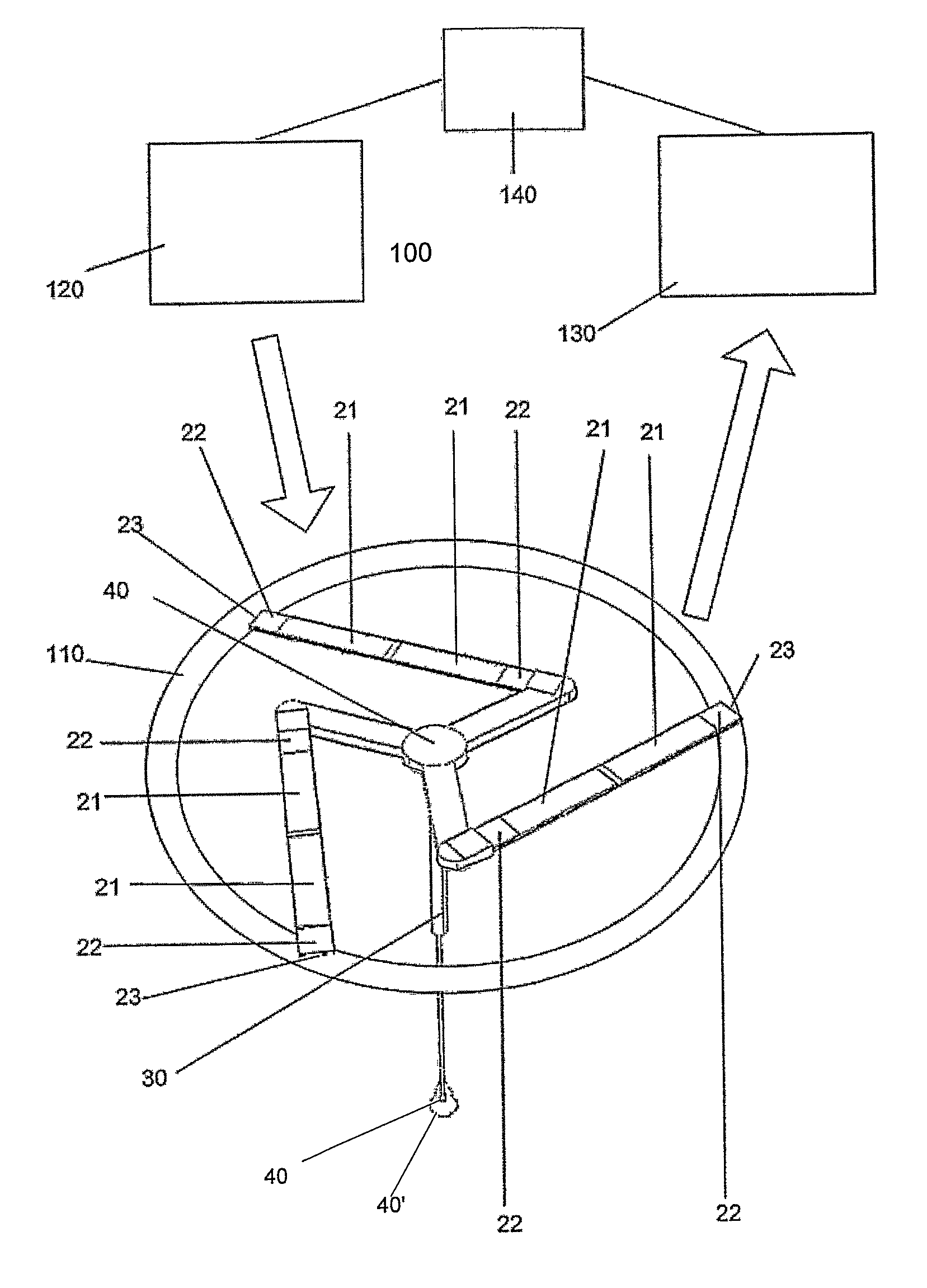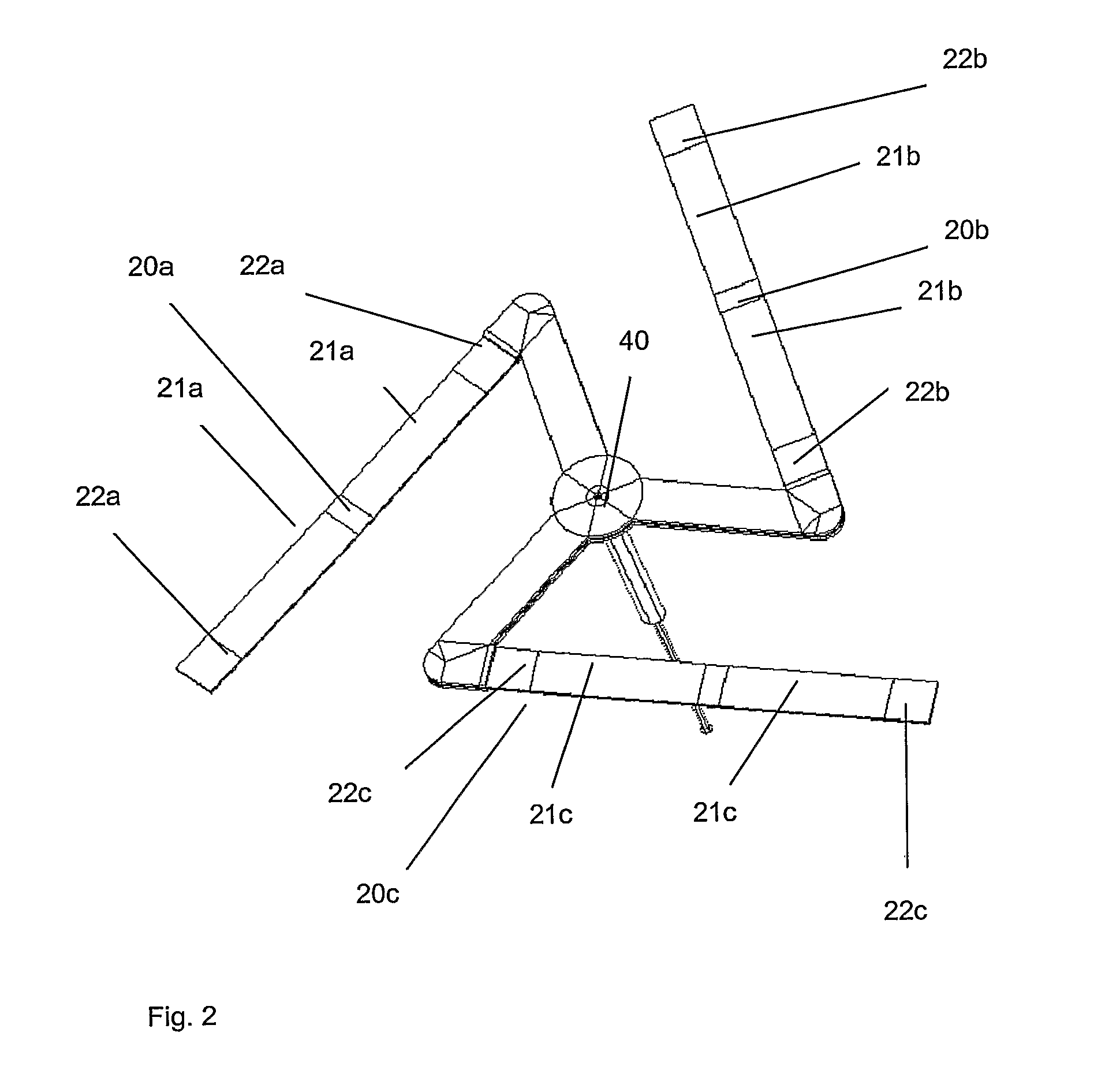Microprobe, measurement system and method
a microprobe and measurement system technology, applied in the field of microprobes, can solve the problems of inability to measure the roughness or form of the channel sidewall, the nozzle of inkjet printers, the inability to measure the roughness and form of the channel, and the inability to meet the needs of inkjet printers, etc., and achieve the effect of high accuracy and precise control of the probe's activity
- Summary
- Abstract
- Description
- Claims
- Application Information
AI Technical Summary
Benefits of technology
Problems solved by technology
Method used
Image
Examples
Embodiment Construction
[0050]FIGS. 1 and 2 are perspective views of a microprobe according to an embodiment of the present invention.
[0051]The microprobe 10 includes a plurality of flexures 20a, 20b, 20c and a probe 30. The flexures are aligned in a plane and meet at a point 40 at which the probe 30 is connected.
[0052]Each flexure 20a, 20b, 20c includes at least one actuator 21a, 21b, 21c and at least one sensor 22a, 22b, 22c.
[0053]It will be appreciated that the number of actuators and sensors per flexure may vary. In the preferred embodiment illustrated in FIG. 1, there are two actuators interposed between two sensors per flexure, one of the sensors being positioned on or in the flexure at a point adjacent the meeting point 40 at which the probe 30 is connected and the other being on or in the flexure adjacent a free end of the flexure 23.
[0054]Preferably, both the actuator and sensor are piezo-electric elements.
[0055]The piezo-electric elements may be of a piezo-electric material such as PZT (lead zir...
PUM
 Login to View More
Login to View More Abstract
Description
Claims
Application Information
 Login to View More
Login to View More - R&D
- Intellectual Property
- Life Sciences
- Materials
- Tech Scout
- Unparalleled Data Quality
- Higher Quality Content
- 60% Fewer Hallucinations
Browse by: Latest US Patents, China's latest patents, Technical Efficacy Thesaurus, Application Domain, Technology Topic, Popular Technical Reports.
© 2025 PatSnap. All rights reserved.Legal|Privacy policy|Modern Slavery Act Transparency Statement|Sitemap|About US| Contact US: help@patsnap.com



